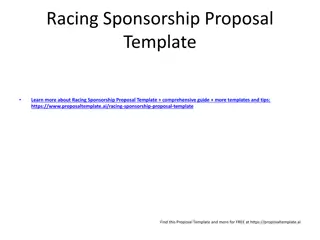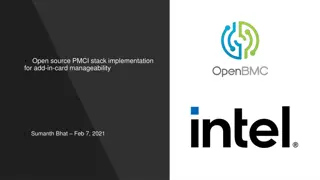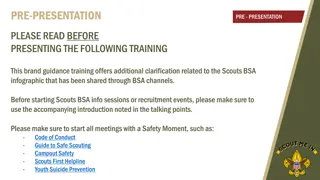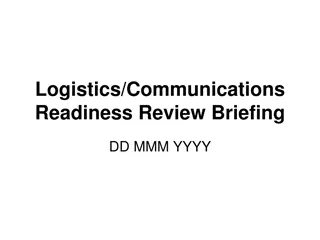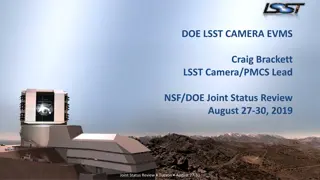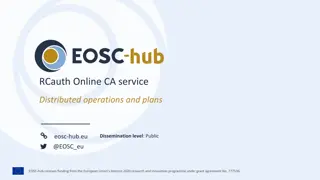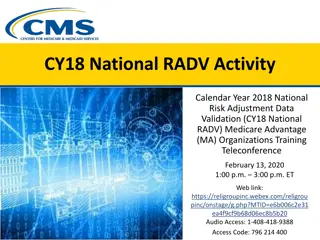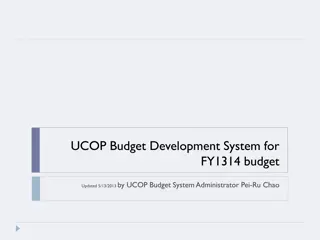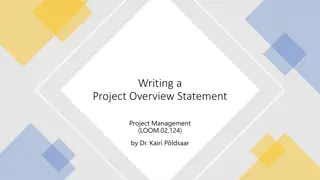
WQIPs: Key Elements and Achievements in Water Quality Improvement Plans
Discover the origin and purpose of Water Quality Improvement Plans (WQIPs) in marine ecosystems, including their role in reducing pollutants, setting water quality objectives, and involving key stakeholders. Learn about the key elements, locations of WQIPs, and achievements in establishing links between catchment discharges and environmental impacts. Explore how WQIPs utilize monitoring data to inform management decisions and address land-based pollution sources sustainably.
Download Presentation

Please find below an Image/Link to download the presentation.
The content on the website is provided AS IS for your information and personal use only. It may not be sold, licensed, or shared on other websites without obtaining consent from the author. If you encounter any issues during the download, it is possible that the publisher has removed the file from their server.
You are allowed to download the files provided on this website for personal or commercial use, subject to the condition that they are used lawfully. All files are the property of their respective owners.
The content on the website is provided AS IS for your information and personal use only. It may not be sold, licensed, or shared on other websites without obtaining consent from the author.
E N D
Presentation Transcript
Marine Ecosystem Policy Advisors Pty Ltd Directors: - Diane Tarte BSc - Eddie Hegerl AO What s a WQIP and what can they achieve? Diane Tarte Chair, Mackay-Whitsunday Healthy Rivers to Reef Partnership National Waterways Report Card Network March 2018 Workshop
The origin of WQIPs - Water Quality Improvement Plans First WQIPs done in early 2000s Developed under the Framework for Marine and Estuarine Water Quality Protection Included in National Water Quality Management Strategy First funded by Dept of Environment under Coasts and Clean Seas Initiative Now with Dept of Agriculture & Water Resources http://www.agriculture.gov.au/water/quality/wqips
Their purpose Deliver significant reductions in discharge of pollutants to water quality hotspots through: Identification of environmental values of water Determination of water quality objectives and load targets for pollutants of concern Development of environmental flow objectives and environmental water provisions Implementation of catchment based management actions - control of point and diffuse sources; use of market-based instruments and adaptive management Application of predictive models and ambient monitoring programs.
Key elements Environmental values and water quality objectives Water quality ambient and event monitoring Predictive modelling & decision support systems Agricultural best management practice Point source (wastewater and industrial) best practice Water sensitive urban design Ramsar wetland ecological character description Acid sulfate soil mapping Market-based instruments http://www.agriculture.gov.au/water/quality/wqips/projects
Achievements Effective approach to establish links between catchment sourced discharges and impacts on estuaries and inshore marine areas. Robust methodology to determine required reduction in land based sources of pollution to sustain estuaries and marine areas. Utilising ambient water quality monitoring data to inform management decisions. Establishment of management action targets Inclusion of social and economic values Involvement of key regional stakeholders
Challenges Effective implementation of WQIPs. How are they being used by different levels of government, NRMs, industry, researchers, ?? Regular review and updating of WQIPs. How many have done 2nd generation WQIPS? Sufficient information on effectiveness of management practices to validate bio-physical, scenario and costings models
Whats next What s the policy driver(s) now the program is with DAWR? Will State and/or Local government fund WQIPs? Explicitly linking WQIPs and report cards Research needs?

![❤[READ]❤ Deep Space Craft: An Overview of Interplanetary Flight (Springer Praxis](/thumb/21511/read-deep-space-craft-an-overview-of-interplanetary-flight-springer-praxis.jpg)



